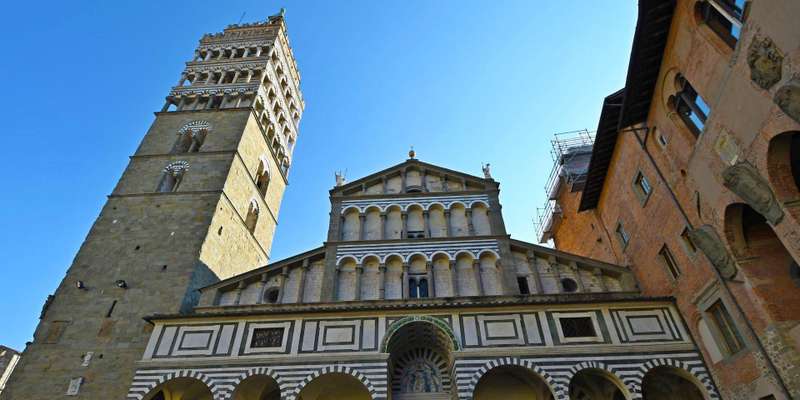- Home
- Useful Tips
- Wine tasting near Pistoia
The rolling hills around Pistoia hide some of Tuscany's most authentic wine experiences, yet most visitors miss them entirely. While 82% of tourists flock to crowded Chianti wineries, you could be sipping rare Sangiovese blends at family-run estates where the winemaker serves your glass. The problem? These hidden gems don't appear on generic 'Tuscany wine tour' itineraries, leaving travelers with cookie-cutter experiences and inflated prices. Worse, last-minute visitors often find fully booked tastings during peak season - a devastating disappointment when you've dreamed of golden-hour vineyard views. Local vintners share that 60% of walk-in guests get turned away in summer months, forcing rushed decisions at less authentic commercial wineries. But with insider knowledge of Pistoia's micro-terroirs and reservation protocols, your wine adventure could unfold like a private invitation rather than a tourist conveyor belt.


Why Pistoia's wine scene stays under the radar (and how to crack it)
Unlike flashy Montepulciano or Montalcino, Pistoia's winemakers prioritize quality over tourism infrastructure. Many generational vineyards here produce under 20,000 bottles annually - barely enough for local distribution, let alone international marketing campaigns. This creates a catch-22: the most authentic experiences lack online visibility, while commercial operators dominate search results with generic tours. The solution lies in understanding Pistoia's three distinct wine roads. The Montalbano corridor specializes in bold reds aged in chestnut barrels, a medieval tradition unique to this subregion. Northwest toward Pescia, biodynamic farms craft sparkling whites using amphorae. True insiders head southeast to Colline Pistoiesi, where tiny appellations like Vincio di Comeano produce just 800 bottles annually of their oak-free Sangiovese. These micro-producers welcome visitors personally if you approach respectfully: always call ahead (even just a day prior), ask about harvest participation opportunities, and request 'degustazione tecnica' for serious tastings beyond the basic tourist pours.
Timing secrets for uncrowded tastings and best seasonal flavors
Arriving at 11 AM like every tour bus? You'll get rushed service and blended vintages. Pistoia's winemakers reserve their best bottles and stories for those who understand the rhythm of the land. April through May offers magic moments when cellar masters conduct barrel tastings of the previous harvest - you might sample unfinished wine straight from the demijohn. Come September, many estates close to casual visitors during harvest, but those who volunteered for grape picking get invited to exclusive press-off celebrations. For guaranteed intimacy without physical labor, target the 'shoulder hours' of 3-5 PM when day-trippers leave. Winter reveals another layer: fewer visitors mean winemakers have time to open special reserve bottles, and you'll taste how cold weather concentrates flavors in the glass. Regardless of season, always ask 'Avete qualche vino fuori lista?' - this phrase inquires about experimental batches or small-production wines not on the standard tasting menu, often leading to unforgettable sips you can't find anywhere else.
Navigating Pistoia's wine roads without a rental car
Public transport between rural vineyards seems impossible until you learn the Italian workaround: ferrovia+fabbrini. The Florence-Pistoia-Lucca train line stops within 5km of several top estates, and local winemakers have an unspoken tradition of collecting interested guests from stations if arranged in advance. Podere Patrignone keeps a vintage Fiat 500 just for fetching visitors from Montecatini Terme station - their Sangiovese rosé tastes even better when you arrive like 1960s film stars. For those preferring professional drivers, Pistoia's NCC (noleggio con conducente) services cost 40% less than Florence-based operators. Marco's Wine Shuttle serves this niche perfectly, with convertible Minis that fit down narrow vineyard lanes. His 'enopass' includes three estate visits with bilingual commentary and a picnic hamper of local pecorino. Best of all? These drivers know which farms accept last-minute additions when other appointments cancel - a frequent occurrence many tourists never discover.
From tasting fees to case shipments: spending smartly
That €15 basic tasting might feel reasonable until you realize it samples bulk wines never meant for connoisseurs. Pistoia's quality estates structure fees differently: many waive charges entirely if you purchase two bottles (typically €25-€40 total for exceptional vintages). Look for the 'no logo' sign - unmarked farmsteads often pour superior wines at half the cost of branded 'cantine'. For serious collectors, the real value lies in mixed cases: several vineyards collaborate to ship 12-bottle assortments worldwide at €180-€240, including DOCG selections that retail for €50+ individually. Smaller groups can split these, or ask about 'mezzo sacco' (half-case) options. One pro tip: always inquire about 'vini da taglio' - blending wines sold at €8-€12/bottle that make perfect everyday drinkers. These aren't advertised because production is limited, but winemakers happily divert some from restaurant clients to appreciative visitors. Remember to request EU VAT forms for tax-free purchases if spending over €155 at one estate.
